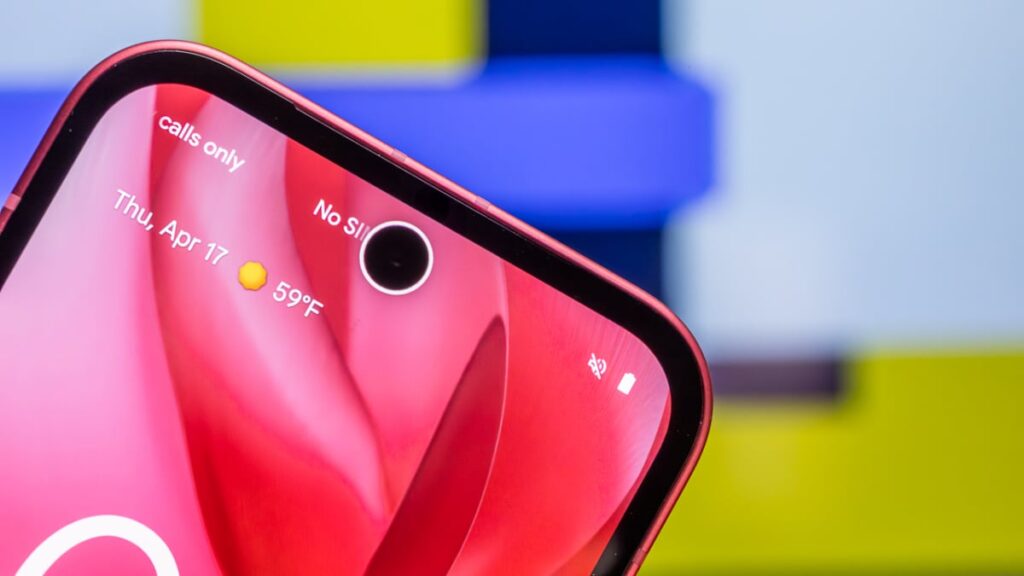Google Pixel 9a vs iPhone 16e: Which should you buy?
Apple recently made its grand (re)entrance to the mid-range smartphone market with the iPhone 16e, replacing the older iPhone SE variant. Of course, now the only thing to do is see how it compares to one of the best mid-range smartphones around, the newly released Google Pixel 9a.
Both phones provide a lot of value for those looking for a flagship-like experience for a much lower price, but there are benefits and drawbacks to each. Let’s get into it.
Google Pixel 9a vs. iPhone 16e
Two phones enter, but only one can fit in your pocket. Which will it be?
Price and specs

The Pixel 9a is a great value.
Credit: Joe Maldonado/Mashable
When it comes to price, there is a clearly superior option here. The Pixel 9a starts at $499, while the iPhone 16e starts at $599. While $100 isn’t the biggest difference in the world of flagships, it’s a large number for anyone in the market for a budget phone.
Here’s what you get in the Pixel 9a for that price:
And for $100 more, this is what the iPhone 16e gets you:
We’ll get into display and performance analysis later, but Google is easily winning the value game so far. You get a bigger and (in some ways) better display and a bigger battery for less money. Apple, to its credit, offers more storage options, but those will only make the phone even more expensive; the 512GB iPhone 16e is $899, which makes it not even really a budget phone anymore.
Design

Apple kept it simple.
Credit: Stan Schroeder/Mashable
Neither of these phones are on the cutting edge of smartphone design, but that’s not necessarily a bad thing.
The iPhone 16e, for its part, looks like a slightly older iPhone model. It doesn’t have the standalone Dynamic Island cutout at the top of the display like you’d see in a recent flagship iPhone, instead going for the classic notch look. There’s no home button, which differentiates it from the old iPhone SE models, but there isn’t one on the Pixel 9a, either. Unfortunately, it only comes in two very boring colors: black and white.
Google’s mid-range phone is slightly bolder in its design. Namely, Google went and removed the horizontal rear camera bar that had become such an iconic part of the Google Pixel look over the past few years. Now, the rear camera is barely noticeable, lacking even a bump to make it stand out. That’s pretty nice if you like your phone to lie completely flat on a table, but it does make the Pixel 9a look like a generic phone prop in a TV show.
Mashable Light Speed
That said, the Pixel 9a offers four colors, twice as many as the iPhone 16e. There are black and white options, as well as one called “Iris” and a gorgeous pink colorway that should be the only one anyone buys, in my humble opinion.
Display

Google’s display is superior.
Credit: Joe Maldonado/Mashable
In my eyes, there’s a pretty definitive winner in the display category.
Pixel 9a’s display is not only slightly bigger (though that can actually be problematic for folks with smaller hands), but its refresh rate is twice as high. Not everyone values this as much as I do, but smooth scrolling is very nice to have on a smartphone, and it’s a little wild that Apple is still so behind the times on this issue in everything other than iPhone Pro models. You also get up to 2,700 nits of peak brightness, which makes it great for outdoor use.
Apple’s panel isn’t bad, by any means. Its 2532×1170 resolution is slightly higher than what Pixel 9a offers (2424×1080), and it is an OLED screen with HDR support. However, with just 1,200 nits of peak brightness, it likely won’t look as good under sunlight as the Pixel 9a.
Performance

Apple went with USB-C for this one, which is nice.
Credit: Stan Schroeder/Mashable
When it comes to performance, there really isn’t a losing choice here.
Both phones are excellent in terms of day-to-day use. Apps load quickly and neither phone slows down too much when there are too many open. I did notice the Pixel 9a getting a little warm to the touch after prolonged use, but a case could easily alleviate that.
If you want to put it in numbers and technically choose a winner, it would be Apple. The iPhone 16e’s Geekbench benchmarking metrics are better than Pixel 9a’s, with Apple netting a 7,423 multi-core score and Google coming in at just 4,358. However, on a practical level, either phone will do just fine for you.
Battery life

Both phones have good battery life.
Credit: Joe Maldonado/Mashable
Battery life is another area where you can only win.
In my testing, the Pixel 9a was more or less a 24-hour device between charges, and could probably last longer if you turned the refresh rate down to 60Hz or took other power-saving measures. I never directly tested the iPhone 16e myself, but our reviewer Stan Schroeder noted that he was able to go about two days between charges on what he described as “heavy use.”
It’s possible, then, that the extra cash you pay for the iPhone 16e is getting you a better battery than what is available on Pixel 9a. However, I wouldn’t describe the Pixel 9a’s battery as “bad” by any means. It’s just less good.
Camera

The iPhone 16e takes nice nighttime shots.
Credit: Stan Schroeder/Mashable
Both the iPhone 16e and Pixel 9a have identical (in terms of megapixels) 48MP main shooters on the rear side. However, Apple only included the one camera lens on the phone’s backside, while the Pixel 9a also has an additional 13MP ultra-wide lens.
Since these are both budget phones, cameras are where the biggest compromises are to be expected. That said, you can definitely get nice-looking shots on either the Pixel 9a or iPhone 16e. One nice bonus that the Pixel 9a has over the Pixel 8a is the addition of Macro Focus, which lets you get up real close to tiny objects and capture them in great detail. Unfortunately, the iPhone 16e doesn’t have this feature at all, due to the lack of an ultra-wide lens.
Given that Google’s phone has that extra lens and at least one feature the iPhone 16e can’t claim, I’m inclined to think the Pixel 9a has a better camera system.



